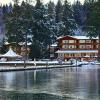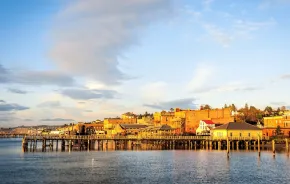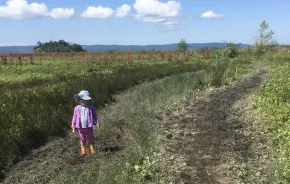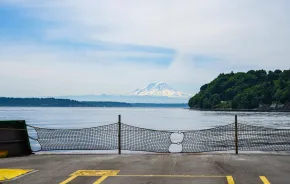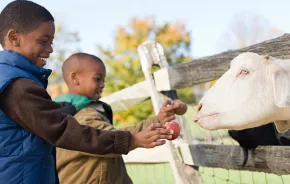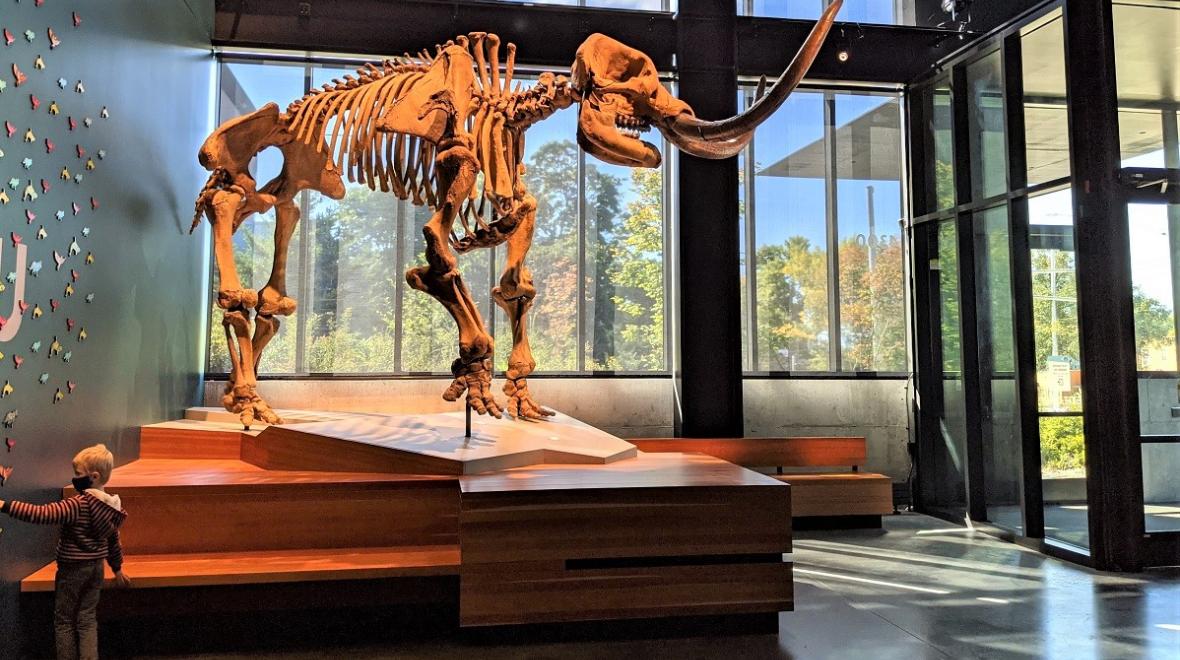
Photo:
The author's son at the entrance to The Burke Museum. Credit: Vicky McDonald
My kids love dinosaurs. And while Seattle’s Burke Museum is a beloved dino destination, I wasn’t sure that my 5- and 3-year-old kids were quite ready for it. The beautifully reimagined museum’s three floors cover everything from paleontology and biology to archeology and contemporary culture. That’s a lot for tots.
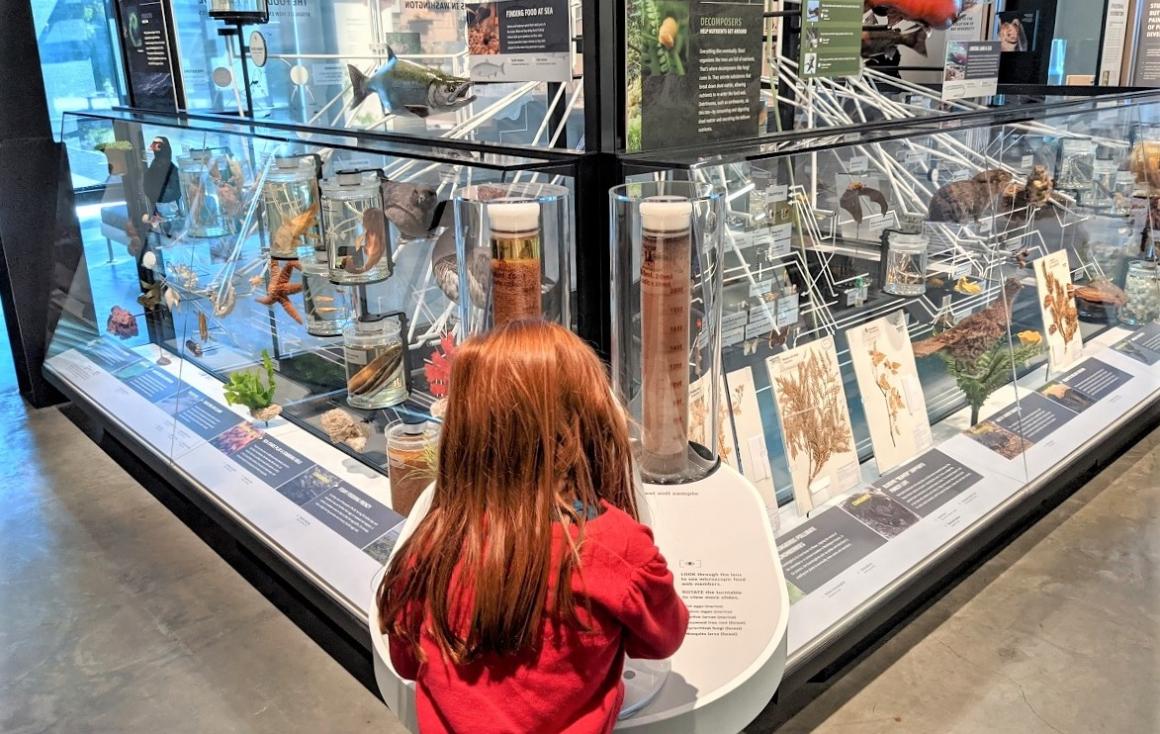
So when we decided to give it a go, I didn’t expect that we would see everything in the museum. But to my surprise, we toured the whole place and my kids enjoyed most of it — especially the dinosaurs, of course!
As rainy weather is sure to roll in soon, The Burke can be a great choice for young kids. Here are some of the highlights for us (starting with the dinos!):
1. Marvel at the dinosaurs.
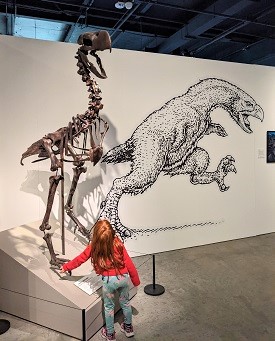
My kids screeched in delight as soon as we parked the car. They’d spotted the giant skeleton hanging dramatically from the ceiling at the museum’s entrance. Bones! It was clear that they were mainly in it for the dinos, so we started our tour on the third floor at the Fossils Uncovered gallery.
My 5-year-old son was dying to see his favorite creatures up close and was thrilled to see a real Tyrannosaurus rex skull, an Allosaurus and a giant mastodon. Reading about dinosaurs in books is one thing, seeing their giant-sized skeletons is a whole other experience. We got to look at the types of tools that paleontologists use to unearth these historic bones. My kids were surprised to see they used simple brushes like we have at home.
2. See real scientists.
Seeing the scientists at work through glass windows is one of the more interesting features of the updated Burke Museum. Kids can see for themselves what the job of a scientist is really like. It gives them a sense of how laborious it is to preserve and present all the works in the museum. In the biology area, there is a large sign to think before you look with kids. They are preparing real animal specimens and some visitors might find it unsettling.
On the day we visited, the scientists were working on the preservation of a grizzly bear. It sounded like a horrible task to me, but the kids found it fascinating.
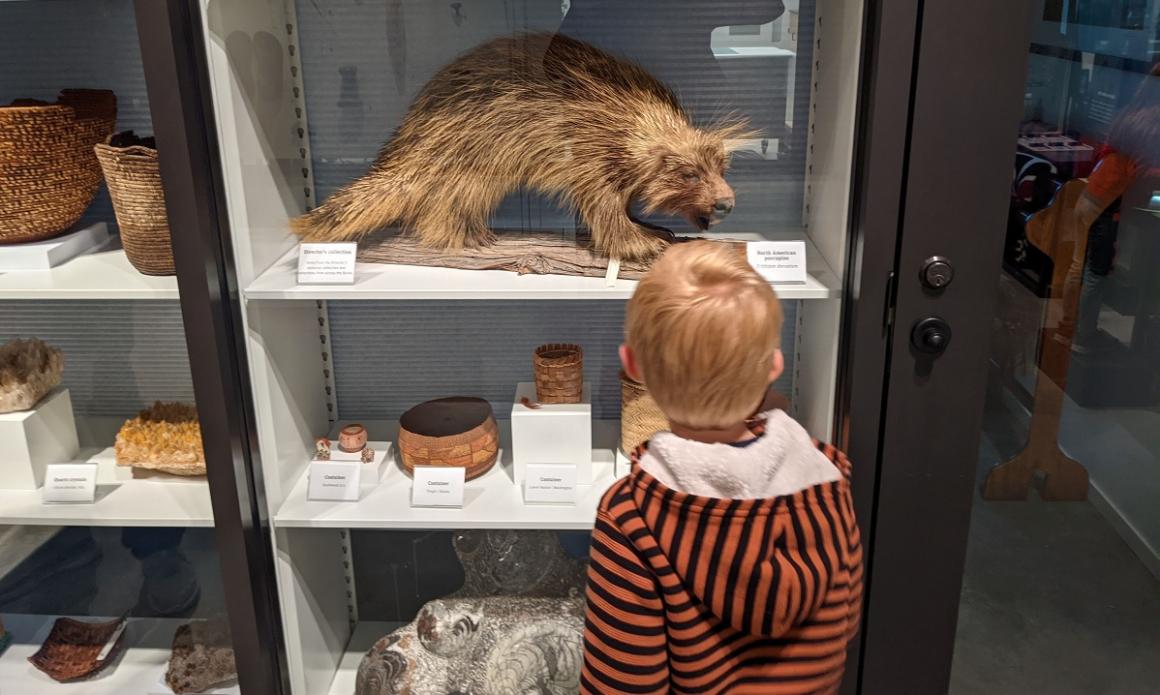
3. See weird and unusual animals up close.
The second floor is dedicated to biology with exhibits called Amazing Life.
I usually find natural history museums and all the stuffed creatures kind of creepy, but The Burke is very bright and spacious, so it didn’t seem dusty and claustrophobic as I’d feared. My son spotted animals that he’d only ever read about in books: a slow loris, a wolverine and a flying squirrel. We got to see a teeny tiny hummingbird up close. While we see them in nature all the time, my kids found it really interesting to examine one so closely.
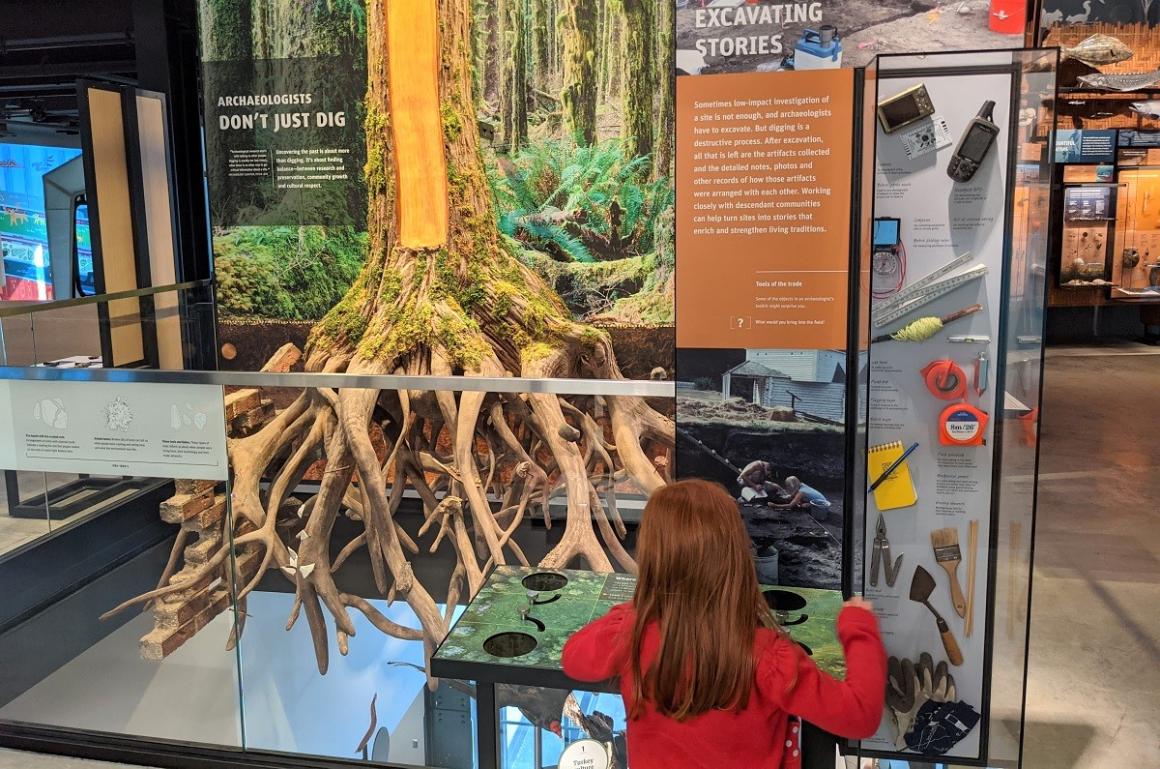
4. See everyday things in a different light.
The large tree in the center of the museum is a fun feature for young kids. Mine stared at the tree in awe for a while. The cross-section of a Seattle dump also caught their imagination and they liked spotting all the cans and implements buried in the soil.
We also saw objects found in a Seattle dump that dated back to the late 1800s. Objects such as an old metal toy horse and a porcelain doll head haven’t broken down in 150 years. This encouraged a good discussion about the things we throw in the garbage and the things we could recycle or donate.
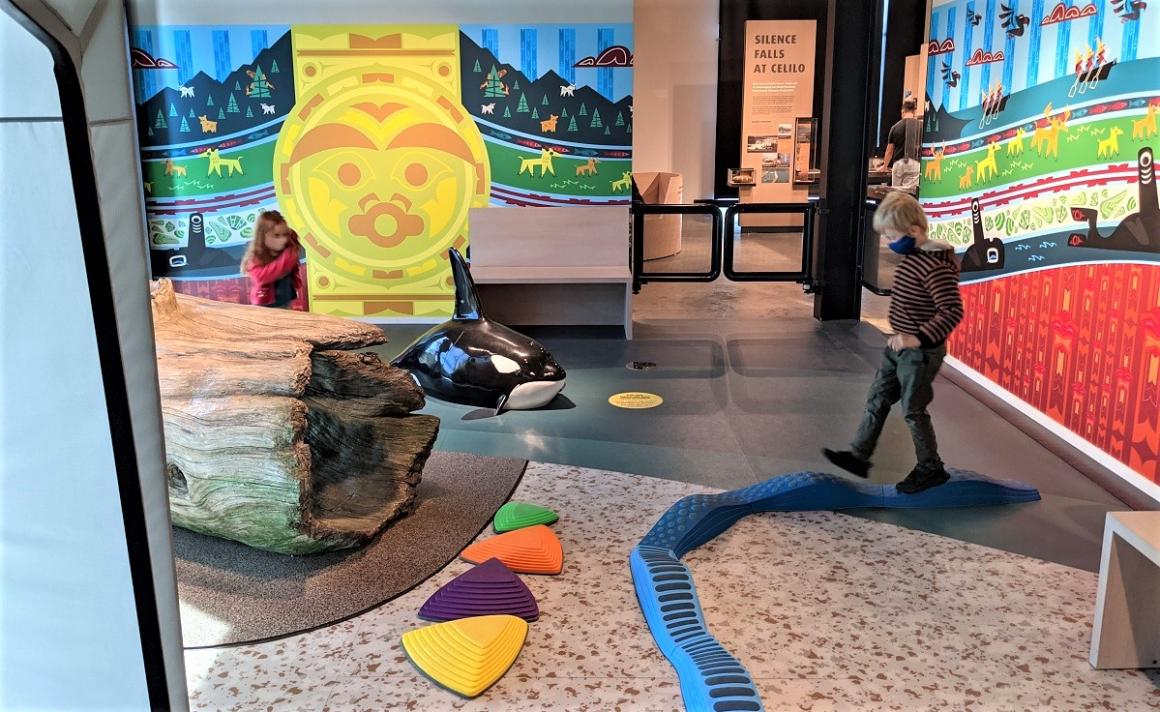
5. Prance about the play area.
With all the serious science stuff to take in, we were glad to find The Field Camp on the third floor, a play area designed for little kids. There we discovered a small pretend tide pool, a log to clamber through, a tent, a table and chairs, and a balance beam. It was enough to provide a few minutes of play time and a good excuse to jump around and get the wiggles out. After our tour of the museum’s exhibits, we really needed this brain break.
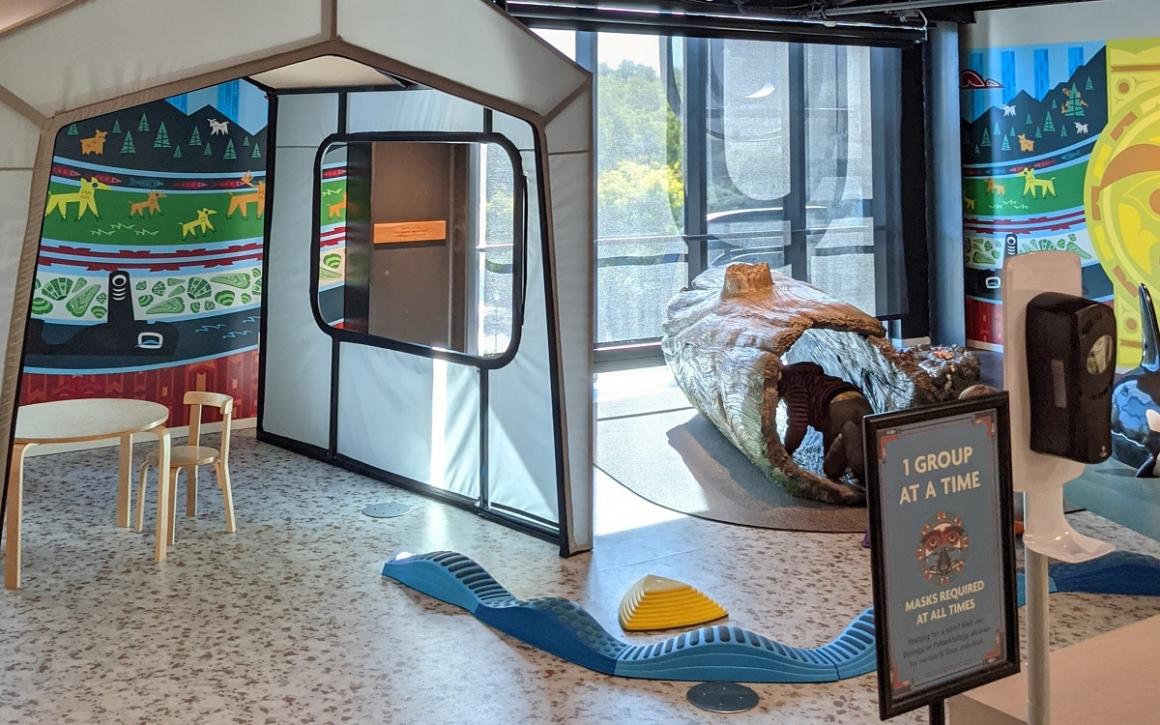
Bonus: Enjoy some food on the steps outside.
After spending about 90 minutes in the museum, the kids were getting tired and looking for something to eat. For snack time, you’ll need to head to the designated snacking area, or, better yet, try the museum café. Off the Rez, the museum’s in-house café, features contemporary Native American food such as fry bread. We opted for a sweet treat, apple juice and a much-needed coffee for mama.
We then ventured out to eat our snack on the seating steps just outside the museum. The steps are surrounded by a flower meadow grown by Oxbow Farm, and it’s a pleasant spot to relax and have a snack.
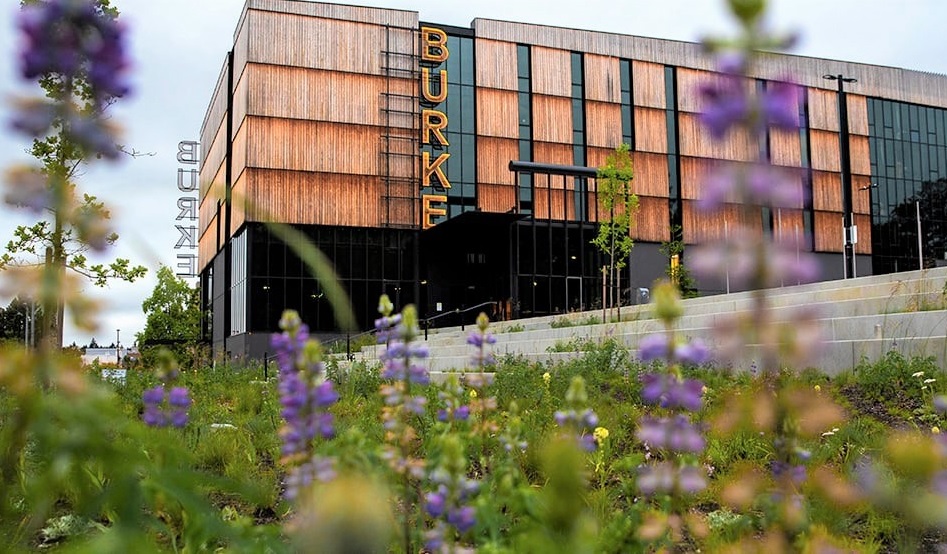
A good adventure
All in all, it was a good adventure for the kids. We booked a morning slot on a weekday, and it was blissfully quiet. My kids bypassed much of the educational stuff that they’re more likely to find engaging on a future visit. Also, when they’re older, I hope we can return to learn more about and appreciate Washington’s Indigenous art and culture highlighted in the museum.
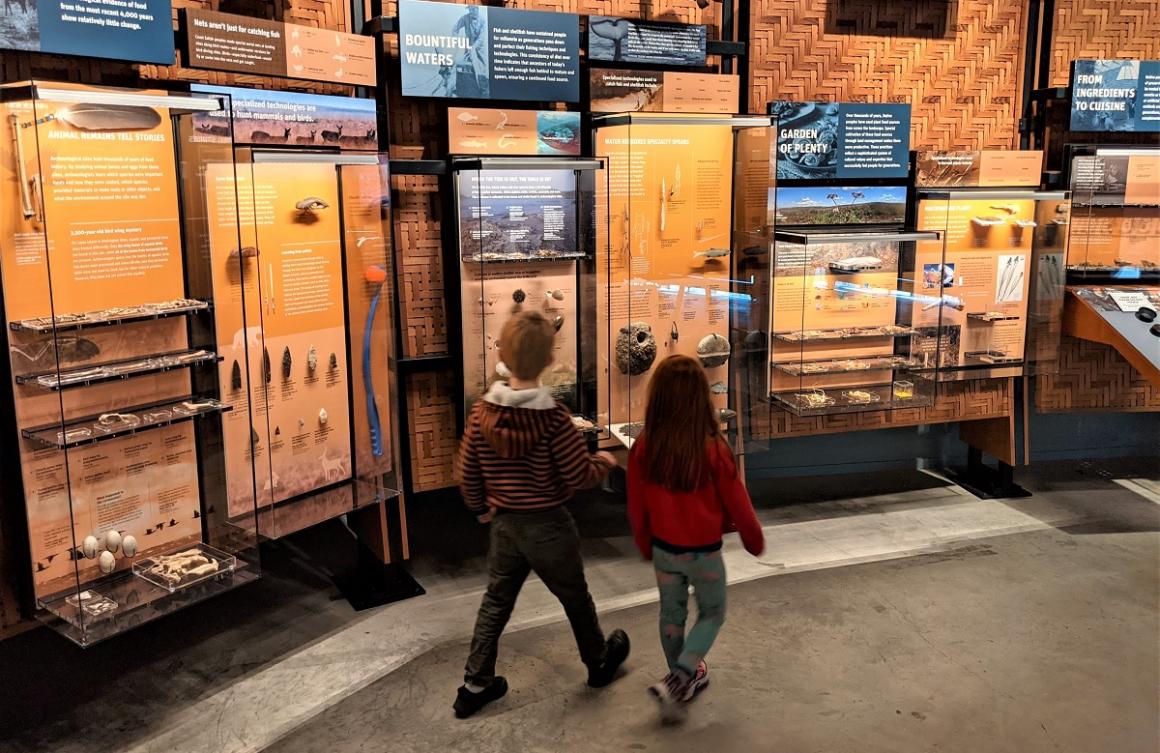
During our visit, I found that my kids preferred to explore things for themselves — they weren’t keen on hearing me explain any of the written information. The Burke is very visually stimulating, and I think they absorbed a lot just by looking at things and trying to understand them for themselves. We had a lot to talk about and unpack on the car ride home!
If you go ...Where: The Burke Museum of Natural History and Culture, commonly called The Burke, is located at the northwest corner of the University of Washington campus. The address is 4300 15th Ave. N.E., Seattle. Open hours: The Burke is currently open Tuesday–Sunday, 10 a.m.–5 p.m.; free first Thursday hours are 10 a.m.–8 p.m. on the first Thursday of each month. Admission: $22 for adults; $14 for youths ages 4–17 and students; ages 3 and younger enter free. UW students, staff and faculty enter free. Admission is free to all on the first Thursday of the month. A membership can pay for itself in as few as three visits; additional discounts are available. Booking tickets online, in advance, is recommended, but you can take your chances walking up as well. Safety: Masks are no longer required, but they’re strongly encouraged. Getting there: The Burke website lists parking options, but there is no free parking in the area. The UW campus is well served by public transit; consider taking the bus, or ride the light rail and hop off at the newer U District station that’s just a 3-minute walk away! Special events:
More fun with preschoolers around Seattle and beyond:
|
Editor’s note: This article was originally published in 2021 and just updated for 2022.







